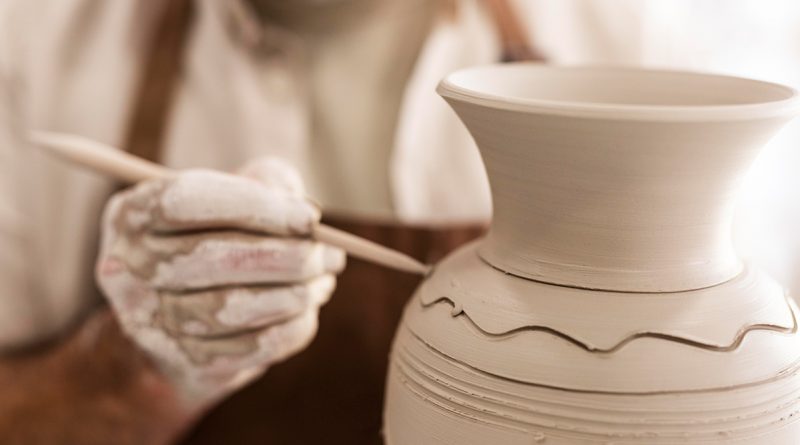Advanced Ceramics: What Are They?
You’ve often heard people telling you that advanced ceramics are essential for your product or manufacturing process. But, what are they? Your knowledge of ceramics might be limited to ceramic art pieces or coffee cups. However, let us tell you that advanced ceramics are an entirely different beast. It could determine whether your technique or product will be successful or unsuccessful. So, to further understand why this is important to your company, let’s do some research.
Ceramics: Modern vs Traditional
Ceramics are typically considered non-organic. You might know them as nonmetallic solids made from powdered materials and heated to form other products. Moreover, they are very brittle, hard, and strong. Besides, they have limited electrical conductivity. However, this conventional definition of ceramics has improved and has gotten a modern version. It enables better variants of the standard characteristics. For example, ceramic materials can conduct electricity just as well as some metals.
Therefore, the Versailles Project on Advanced Materials and Standards (VAMAS) has updated the definition of advanced ceramics. It reads: “an inorganic, nonmetallic (ceramic). A fundamentally crystalline material of strictly regulated composition and produced from highly refined and/or defined raw elements delivering precisely specified properties.”
Thus, advanced ceramics differ from traditional ceramics in many ways. They have a glassy appearance (which is essentially crystalline). Meanwhile, they have a highly designed structure (rigorously controlled composition and manufactured with detailed regulation). But, before we take a deep dive into advanced ceramics, let’s first see what traditional ceramics are. Besides, we’ll read how it differs from advanced ceramics.
What are traditional ceramics?
Traditional ceramics are made of substances found in nature. For example, quartz sand or clay minerals. We primarily employ them in the production of industrial abrasives. Other productions include refractory linings, china dinnerware, clay tile, and brick.
What are advanced ceramics?
All items created using inorganic, pure materials using a variety of specialized manufacturing techniques are advanced ceramics. One can use advanced ceramics for different reasons. It can include their permeability, magnetism, insulation, and conduction.
How are traditional and advanced ceramics different?
There are four big differences between traditional ceramics and advanced ceramics:
#1. Raw material
We have read already that the production of traditional and advanced ceramics needs different types of raw materials. Traditional ceramics are usually made using natural materials. For example, feldspar, quartz, or clay. On the other hand, one can make advanced ceramics using synthetic powders. For instance, aluminum oxide, silicon carbide, silicon nitride, etc.
#2. Structure
The composition of the clay is an important factor that decides the structure of traditional ceramics. Depending on where the natural material originates from, the ceramics have a different texture. Besides, traditional ceramics contain more flaws that impact quality control.
On the other hand, the chemical component used to create advanced ceramics modifies their structure. As a result, sophisticated ceramics have a microstructure that is homogenous and free of impurities and flaws.
#3. Manufacturing technique
One can use the minerals used in the making of traditional ceramics directly for wet molding processes. For example, grouting, slurry molding, and plastic mud molding. Usually, there is no requirement for additional processing upon the high-temperature sintering of traditional ceramics.
However, the creation of advanced ceramics can need further post-sintering processing. Moreover, there are ceramic products that might require certain secondary procedures. Thus, various elements, such as the part finish or completed (net) dimensions, may play a vital role in this. However, when making things from traditional ceramics, this is rarely the case.
#4. Function
Ceramics made now have various purposes than traditional ones. We can use advanced ceramics to create specialist pieces. These products have precise mechanical or physical properties to meet the demands of many industries. Meanwhile, one usually uses traditional ceramic goods to create everyday objects and building materials.
The making process of advanced ceramics
The production method of traditional and advanced ceramics is pretty similar. However, there’s only one difference. The raw materials used for advanced ceramics are naturally occurring. The manufacturing process of traditional ceramics includes a liquid-phase sintering method. Meanwhile, for advanced ceramics, it takes synthetic materials densified using transient-liquid sintering or solid-state sintering. So, the powders used for advanced ceramics have incredibly minute grains. And the reason behind this is that the sintering procedures for these materials rely on tiny particles.
So, before the sintering process begins, all the powdered ingredients must share the same chemical makeup to produce an electrically conductive ceramic. As a result, to ensure that the chemical composition is homogeneous, a number of chemical techniques have been devised that have improved the powder mixing stage.
Some of these procedures are the Pechini method, spray roasting, and sol-gel processing. Others include coprecipitation and freeze-drying, combustion synthesis, high-temperature synthesis, and exotic energy deposition. Moreover, depending on how you’ll use the ceramics in the end, the best process will vary.
Applications of advanced ceramics
Advanced ceramics have frequent uses in a variety of industries. The most popular include:
- The automotive (spark plug insulators, catalyst supports, sensors, etc.)
- Electronics (circuits, seals, substrates, packaging materials, etc.)
- Nuclear power (waste storage, fuel pellets, reactors, etc.), optical (glasses, lamp envelopes, lasers, etc.)
- Medical (dental implants, prostheses, bone screws, etc.) industries.
One can also use advanced ceramics in kilns to bake, dry, harden, or burn a substance like clay due to its capacity to tolerate extremely high temperatures.
Conclusion
You might find advanced ceramics a bit complicated. However, they are also quite helpful, especially in the manufacturing sector. So, spend some time learning more about them so that your company has the most cutting-edge machinery feasible.




